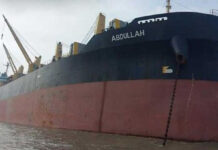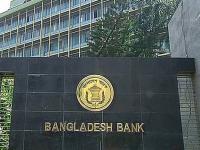Living with and on water in Bangladesh

In the past twelve months or so, I have been very fortunate to be able to visit many corners of Bangladesh by road. I wanted to experience what seemed like a Bangladesh in transition, particularly how economic development was changing the country’s geography. These trips provided me with invaluable insights into the country’s changing natural environment. From Sylhet and Sunamganj to Rajshahi and Rangpur, from Barisal and Jhalokati to Patuakhali, Barguna and Kuakata, Bangladesh felt like a country pulsating with new energy, some inspiring, some chaotic, some dystopic.
One of the great pleasures of these trips was my ability to cross many rivers, the epic stories engraved on the Bengal delta. The waters of Titas, Surma, Kushiyara, Karatoya, Padma, Jamuna, Ichamati, Atrai, Dhanshiri, Gorai, Arial Khan, Kirtankhola, Lohalia, and many others undoubtedly shaped the aquatic personality of the land. Crossing rivers in search of something or anything felt like a unique Bengali phenomenon. I was convinced anew that rivers are what that make Bengal Bengal.
My trips left me feeling inspired, yet heartbroken. It seemed as if our rivers were under attack. Economic growth, infrastructure development, industrialisation, the rapid spread of the built environment, sand mining, misuse of river waters, and population boom seemed to have taken a toll on the rivers, canals, and wetlands of the country. Illegal encroachments into rivers, indiscriminate dumping of industrial waste, brickfields on river banks, consistent littering, greasy pollutants from motorised boats, siltation, and a general lack of public awareness of river ecology—all appear to contribute to the country’s progressively unhealthy aquatic state.
The alarming message that emerges from all of this is that despite living in a delta for millennia, Bengalis have not learned how to live sustainably with, on, and around water. As a nation, we have long romanticised our liquid deltaic landscape with poems, songs, films, and literature but we have not internalised how to treat our rivers with respect and gratitude.
This paradox is ironic, given the hydro-geography of our country. The delta of the Padma-Meghna-Jamuna river system and its intricate network of tributaries account for 80 percent of the country’s landmass. The higher grounds of the Madhupur and Barind Tracts at the centre and northwest occupy only 9 percent, while the hilly region of the southeast and northeast occupies 12 percent.
What does this tell us? Bangladesh is a land of water and flat lowlands. Most elevations of the country are less than 10m above sea level, while the southern coastal regions are more or less at sea level. Imagine what would happen to countries like Bangladesh, the Netherlands, the Maldives, the Marshall Islands, and Kiribati, and coastal cities like Osaka, Rio de Janeiro, Shanghai, Alexandria, Miami, and Manhattan with 1m sea-level rise by, say, 2100. There is credible data affirming that an increase of 3 degrees Celsius due to global warming would cause sea-level rise of two metres. If that is the case, much of the southern coastal regions of Bangladesh are likely to be submerged by water.
That brings me to my crucial contention today. What are we going to do in Bangladesh about the real prospect of climate change and sea-level rise? What should we do when floodwaters come? Continuing to fill up lowlands with sand mined from riverbeds will be fatal for Bangladesh. We need strong urban and environmental policies to encourage living with and on water. We need to develop an aquatic lifestyle. We need to learn how to live resiliently in a wetter Bangladesh.
A million climate refugees could be transformed into dynamic communities that see water not as a threat, but more as a fluctuating resource to survive with sustainably. The idea of fishing or aqua-nomadic communities living on water should become mainstream in Bangladesh. Inhabitable boats could be a strong trope for new types of urbanisation. The floodplains of Purbachal didn’t have to be a 6,000-plus-acre dystopia of sand, mined from rivers across the country, irreversibly damaging this deltaic land’s life-sustaining river ecology. Instead, Eastern Dhaka could have been a prime example of aquatic urbanisation. Rather than trying to defeat water, we should celebrate it and live with it.
This concept is hardly futuristic. Such adaptive living with water is already happening in countries with prudent public policies for a hydrologic future. Consider the Netherlands, a country with much of its landmass below sea level. For instance, 90 percent of the city of Rotterdam lies below sea level. This waterlogged nation survived for ages by pumping water and building a coastal defence system to keep ocean water out. The need to survive against the threat of water has in many ways shaped the national identity of the Netherlands.
However, a new philosophy for water management has been taking shape in the Netherlands for quite some time. The new struggle is not to try to tame Mother Nature but to live with her in harmony. Given the prospect of rising tides and fiercer storms, the futility of trying to keep water out has become apparent. The new idea is to let water in, with some measure of control, and create buildings that would not only survive in floodwater but also transform rising tides into a resource.
For example, self-sufficient floating houses have been built in the IJburg neighbourhood, artificial islands created on IJmeer Lake, not far from Amsterdam. Buoyant concrete bases, partially submerged in the water, provide the “foundation” for floating homes. A lightweight supporting steel structure, along with wooden walls, rooms and other domestic facilities, is built upon the floating concrete tub. The submerged portion of the structure contains living quarters, along with bathrooms and other service spaces. The water-level floor includes functional spaces like kitchen and dining spaces. The main living area is on the upper level with overlooking terraces. This is a boat in the shape of a traditional house. The novelty lies in mainstreaming aquatic domesticity.
With a growing shortage of buildable land, unpredictable shoreline and rising sea level, the idea of self-sustaining floating structures and “hydropolises” to house people has become a policy priority. These innovations are especially crucial for countries facing climate-change challenges. While there have been sporadic and individual efforts in Bangladesh to create water-based living (for instance, solar-powered boat schools), aquatic living is still marginal to hegemonic land-centric development regimes. Both public and private sectors must undertake primary data-based research on the topic. City development authorities like RAJUK and city corporations across Bangladesh must develop dedicated research wings within their organisation that would generate new knowledge for future environmental adaptations.
As I crossed the Andharmanik River near Barisal, the Surma River in Sylhet, and other rivers in Bangladesh, I realised, again, what Bangladesh was about. Not only should we protect our rivers by law, we should also quickly learn how to live with, around, and on them. The sooner we start thinking hard about aquatic urbanisation, the better. Like the Netherlands, it is an existential question for us.
Adnan Morshed teaches architecture, architectural history, and urbanism in Washington, DC, and serves as Executive Director of the Centre for Inclusive Architecture and Urbanism at BRAC University, Dhaka. He is the author of DAC/Dhaka in 25 Buildings (Barcelona, 2017).
Source: The Daily Star.









